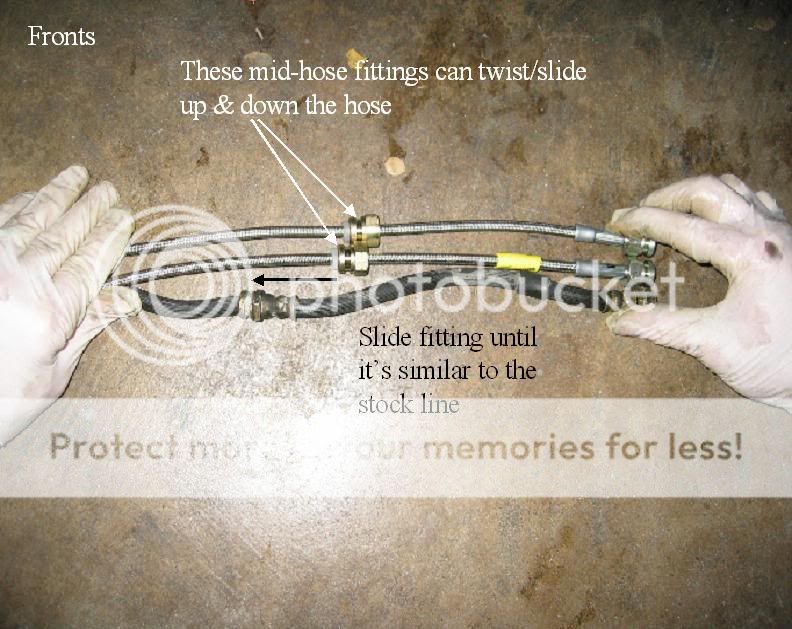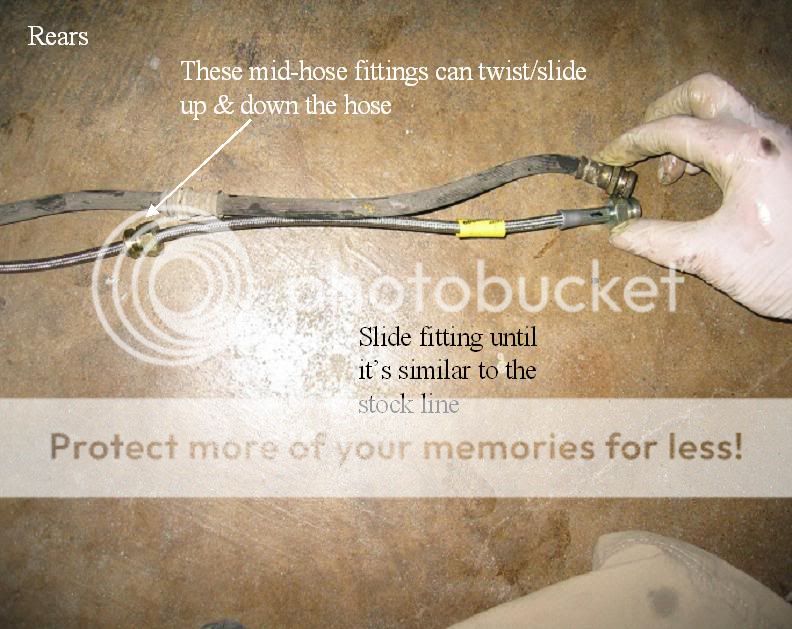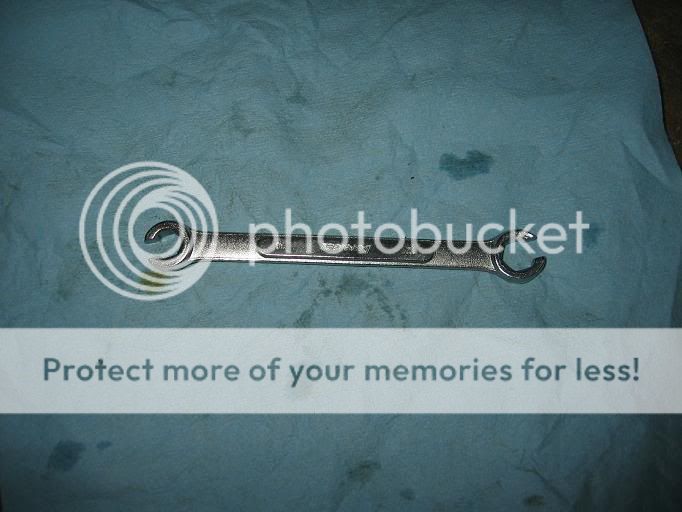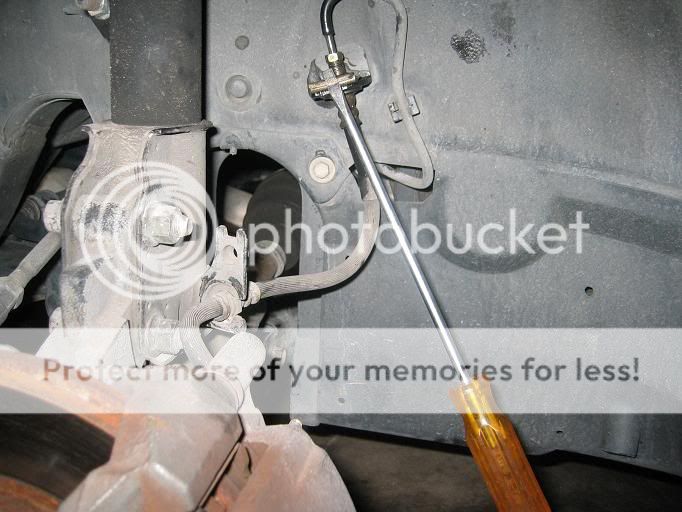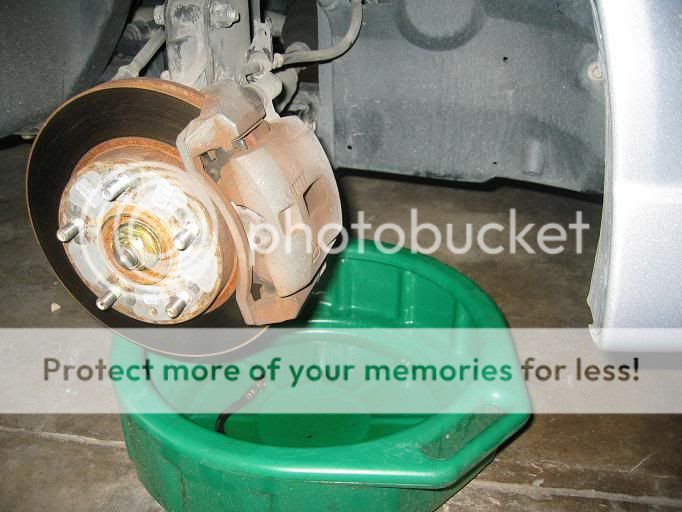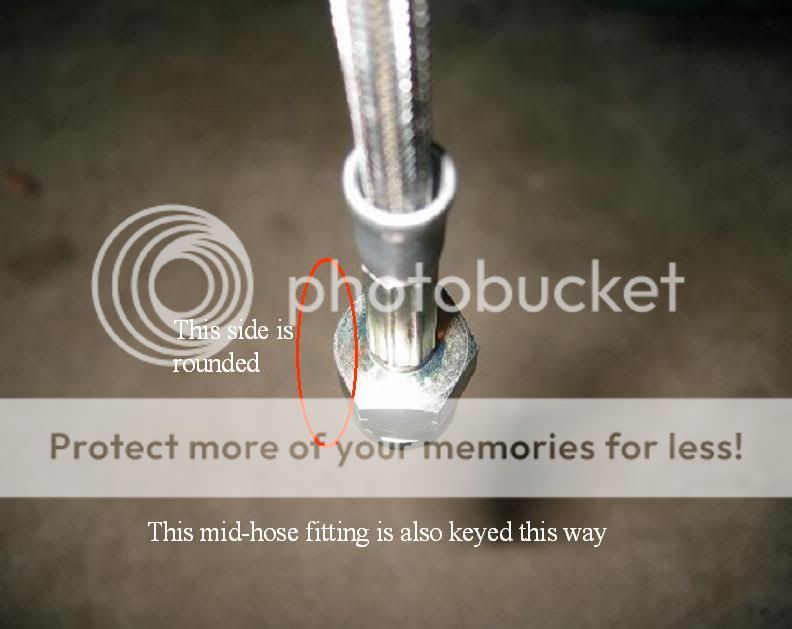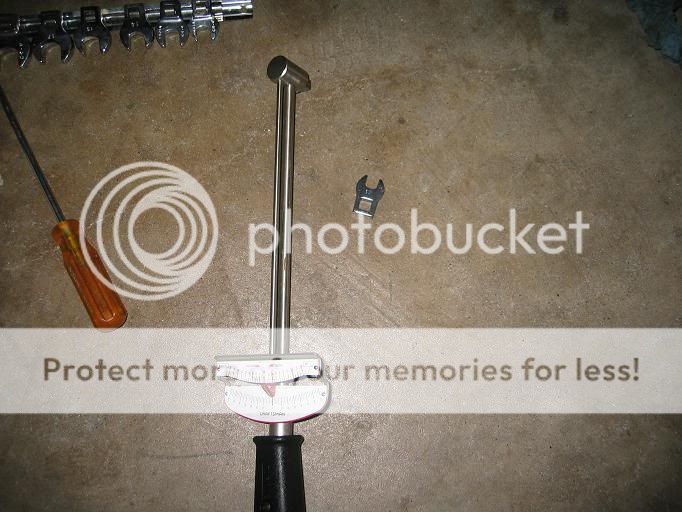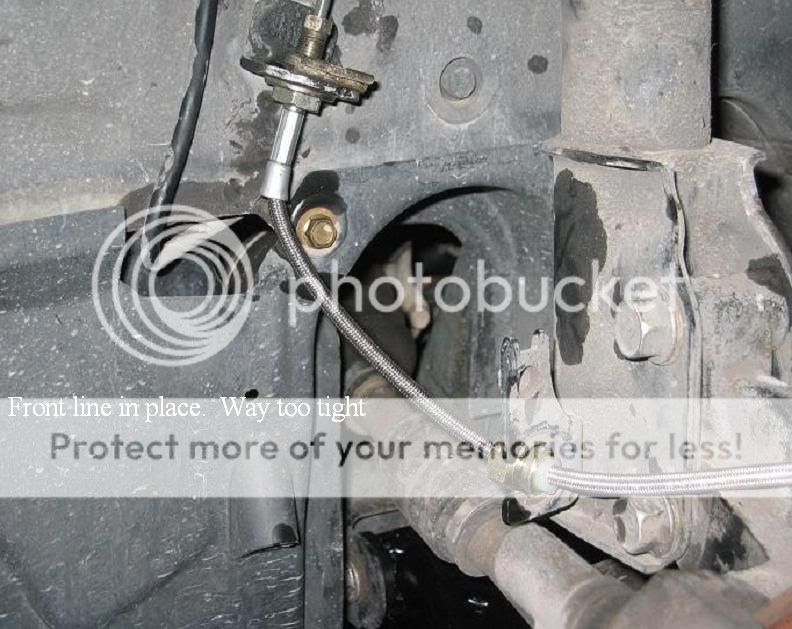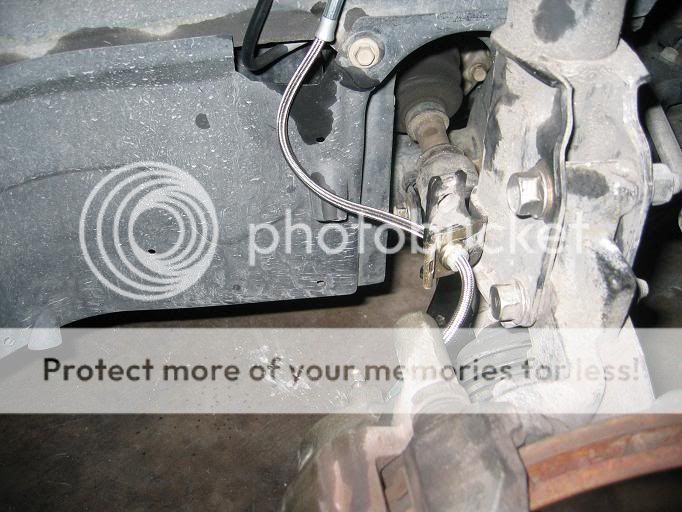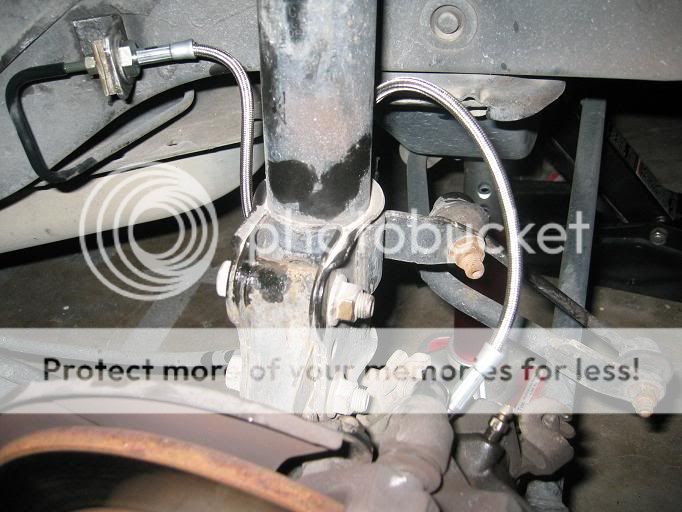Did this over the weekend on my PR5 and took some pics along the way. Since this thread is oddly absent of pics, I figured I'd include them here:
First, this is how my fronts appeared out of the box. Notice how different they are compared to stock. I didn't realize the first time around that you can simply move the mid-hose fittings. No special tools required, just a simple twisting or pulling by hand will do (Thanks, Ken of PG). Let me also add that even after I got the lines installed, I adjusted the position of the mid-hose fitting to strike a good balance between bend-radius and tension:
Here are the rears out of the box:
As has been stated, a 10mm flare nut wrench is useful for the hard line:
I found that a long flat-head screwdriver was the perfect tool for removing the clips. A little twisting, pulling, and leverage and they pop right out w/little effort
One of the open topped fluid containers works well here:
When installing the new lines, notice how the fittings are keyed (they are also keyed on the stock lines). I think people have had problems with re-installing the clips in the past because they didn't realize the parts were keyed. When the keyed portion is not lined up, it won't sit flush, and you'll have a very tough time inserting the clips and will likely deform it. When you have the keyed portion in correctly, it does not rotate, it's in the hole completely flush, and the clips slide in relatively easily. Use the stock lines as a guide to tell you how the keyed portion should be oriented:
For the fronts, I started at the hard line so that I knew the keying of the fitting would be correct w/o any twisting. For the rears, I started at the caliper since the fitting is angled, and it should only be installed angled upward.
For torquing the hardline, you can use a crowfoot attachment on a torque wrench. Reduce the torque appropriately for the crowfoot extension. Google 'crowfoot torque' or similar:
If yours looks like the following, it's wrong (and downright dangerous). You need much more slack between the hardline and the strut. My lines out of the box were like this before I realized that the mid-hose fitting could move:
Here is the final routing I ended up with:
Fronts:
Rears:
The first one took me about 45 min. The remaining three took me about 10-15 min ea.

